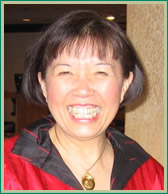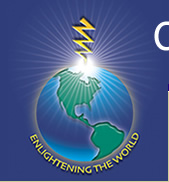
From Less Closed to More Open: The Experiences of the Girl Scouts and an Executive
|
 |
|
Bea Mah Holland |
The journey from closed to open is an intriguing one, requiring many different capabilities including—among others—consciousness, courage, and confidence. This journey is often a game-changer, and even a life-changer; it may occur in any person or collective system. We are currently observing two such transformations: one in a national organization—the Girl Scouts—and the other in a business executive. One of us is a board member of the Girl Scouts of Eastern Massachusetts (GSEM), a council of the Girl Scouts USA. The other example is that of a business executive committed to shifting from a typical career trajectory to bring about a stronger alignment between his talents and the roles to which he aspires.
The definitions of “open” and “closed” are many and varied, with “open” frequently regarded as more positive, and “closed” more negative. Openness captures the sense of generosity, agility, adaptability, adventure, and discovery of new worlds and talents. Being open is sometimes seen as taking a risk and becoming vulnerable, and often suggests an element of faith. It can be mental, emotional, and physical: “open-minded,” “open-hearted,” “open arms,” “eyes wide open.”
Closed, on the other hand, can connote a sense of stasis or inactivity, shrinking or constricting, and is sometimes a synonym for stinginess, staleness, sluggishness, or dullness. It can also represent routine and protection against outside forces, be they people or any part—or all—of the world at large. While here we focus on the positive results of being open, we acknowledge explicitly that there are many sound reasons for moving from open to closed—ones that protect and close off danger, domination, and abuse, and other reasons that may be accessed only through one’s unique discernment.
GSUSA, founded in 1912 and nearing its hundredth birthday, recognized its need to be more open and responsive to today’s girls. Flourishing sports, music, and many other community opportunities for girls contributed to sharp membership falloffs, so in 2004 the national organization engaged Willie Pietersen of the Columbia Business School to use his Strategic Learning methodology “to help Girl Scouts develop a strategy to ensure our future success and growth.” The approach taken by the national organization has cascaded to virtually all the Girl Scouts councils in the United States, bringing a shift in focus from “cookies, camps, and crafts” to “confidence, courage, and character.” GSEM, for example, has crafted its winning proposition: “GSEM is where girls build lifelong leadership skills through a unique, fun experience that inspires them to make a difference in their world.” Through a multiday, in-depth process involving stakeholders from all constituencies, Strategic Learning has provided a process to identify trends, implications, and gaps. The end goal will be an updated structure that is aligned with both existing and emerging needs, resulting in reinvention, revival, and growth.
Our second example, a business leader of an international firm, had felt locked in place, yet was motivated to create a new way of behaving and interacting to position himself to do more of what he loves and also to progress in his career. While “Joe” had the necessary intelligence, skills, and knowledge of his industry to be in a much higher position, he needed help in buffing up his personal and professional presence; he used his determination to convince the president of his firm of the benefits of coaching. Joe decided to use a “360,” an analytic tool that included confidential feedback from several colleagues on his existing strengths and those yet to be developed. Joe is using the learnings from his colleagues’ perceptions to advance himself and to move from stasis to openness, as seen in his current experimentation with new behaviors. He continues to increase his self-awareness and to do his homework with a spirit of adventure. By engaging in a more conscious conversational “give and take,” he is expanding his repertoire and is becoming the beneficiary of a more vocal and motivated team. He is showing the discernment to discard others’ perceptions that do not serve him, while demonstrating courage and determination to incorporate insights that ring true and that provide him a path to more fulfilling roles in work and life.
Though few people would dispute the increasing chaos and fear brought about by our turbulent times, we can still benefit from using our ability to make choices. If we remain open to imagination and possibilities, we can always—at least to some extent—create options for ourselves.
![]()
Center for Empowered Leadership ®
Email: info@cfel.org
Phone: 1.609.259.7911
